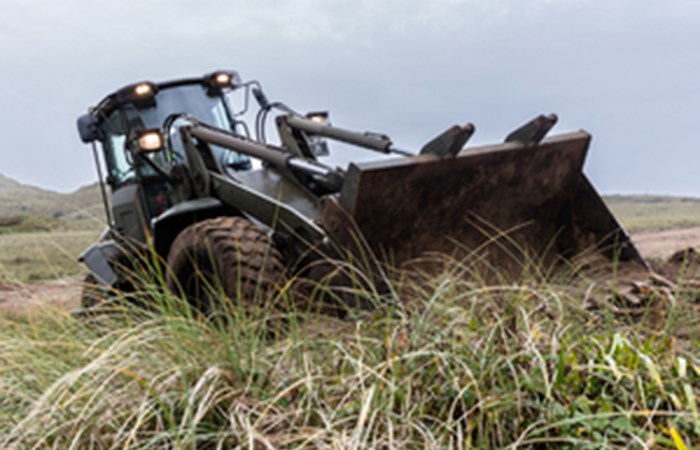Defence Infrastructure Organisation

For the second year running personnel from the British Armys 232 Port Squadron, 165 Port and Maritime Regiment Royal Logistic Corps (RLC), have taken part in a military training exercise that not only develops their skills but also creates better conditions for sand dune wildlife in the Special Area of Conservation (SAC).
Last years work by the Regiment was so successful that the training exercise has been repeated this year.
Lt Col (Retd) Andrew Westcott, DIO Training Safety Officer for the Cornwall area, said:
The UK Defence Training Estate is home to a diverse range of habitats and wildlife species, many of which have been granted protected status. Through our collaborative work with Cornwall Wildlife Trust and the Army, were sustainably managing land used for military training and balancing military needs with ecological conservation here at Penhale Training Area.
The large dune system at Penhale is home to a wealth of native wildlife, from reptiles like common lizard and adder, to delicate orchids, the rare silver-studded blue butterfly and the silvery leafcutter bee, which only lives in sandy habitats. These species thrive in our coastal landscapes when there are plenty of areas of bare sand available for burrowing into or hunting on top of, and low grassland where they can hide or produce flowers.

Great mullein moth caterpillar. Dave Thomas
The challenge that Penhale Dunes SAC currently faces, much like many of the coastal dune systems in Europe, is that areas of bare sand or low grassland are becoming smaller and further apart. Fast-growing scrubby vegetation encouraged by the loss of natural grazing, by climate change and by nitrogen increases caused by air pollution is overtaking the landscape. As the bare sand and low grass habitat areas shrink, dune plants and animals are the first to suffer; coastal sand dunes are experiencing significant biodiversity loss.
As part of a machinery training programme, two 16-tonne military diggers were used by a team from the Regiment to remove areas of overgrown scrub and expose bare sand on Penhales overgrown dunes. And, in a previously damaged area that is now home to lower plant biodiversity than the surrounding dunes, the diggers were used to strip away the top layer of turf to expose patches of bare sand. All this will create better conditions for sand dune wildlife.
Jon Cripps, Penhale Dunes Ranger at Cornwall Wildlife Trust who manages dune restoration with Dynamic Dunescapes, said:
Last years work successfully reduced the cover of thick blackthorn scrub and Great mullein has been one of the first plants to colonise the area, adding a splash of vibrant yellow. Weve also seen Common restharrow appearing, which is fantastic.
Its great that weve been able to find a way for the militarys training to have a real, positive impact on the habitat and the wildlife at this site. The scrub here needs removing and by using this method were more likely to be able to remove all the root material too, which can cause the plants to regrow.
Major John Porter, Officer Commanding for 232 Port Squadron, said:
Were really pleased to be able to continue to support the Cornwall Dynamic Dunescapes Project at Penhale Training Area this year.
Not many people would link conservation work of this nature with military personnel honing their skills, but this exercise has enabled our team to learn about and practice manoeuvring these large excavators which are often used to support major operations around the world.
By conducting our training in the local area to where our Regiment is based, were also helping to reduce the impact on the carbon footprint.
Work at Penhale Dunes is taking place as part of Dynamic Dunescapes, an ambitious conservation project aiming to restore 7,000 hectares of sand dune in England and Wales, funded by National Lottery Heritage Fu
